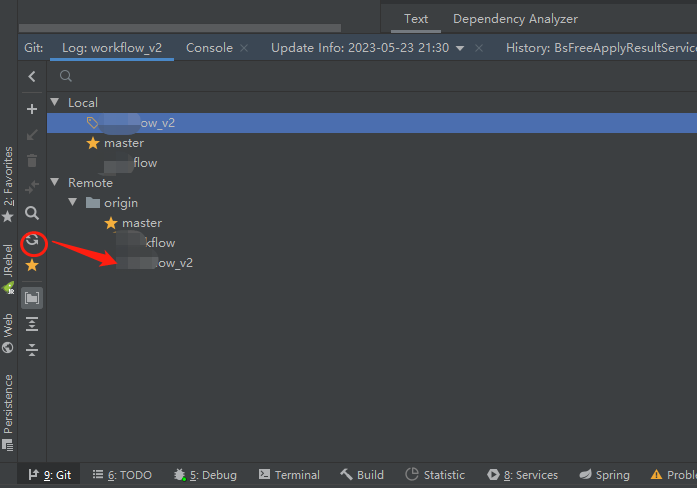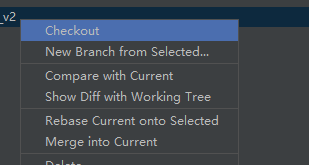大数据多线程高效批量处理
工作中遇到的场景,这里写个例子出来,实际应用比此处更为健壮和完善
应用场景:
对一张表10万条数据(或100万或1亿+)进行更新操作或写入操作;
菜鸟是一条一条的执行吧,这显然不行啊
我在实际项目中是这样应用的, 批量更新!当然这显然是不够的 要线程批量更新才对吧!
工作中遇到的场景,这里写个例子出来,实际应用比此处更为健壮和完善
应用场景:
对一张表10万条数据(或100万或1亿+)进行更新操作或写入操作;
菜鸟是一条一条的执行吧,这显然不行啊
我在实际项目中是这样应用的, 批量更新!当然这显然是不够的 要线程批量更新才对吧!
select product_id,survey_date+interval '1 DAYS'
select * from (
select *,
case when last_week_avg_price=0 then 0 else (this_week_avg_price-last_week_avg_price)/last_week_avg_price*100 end ringvalue,
(select sum(cast(this_day_trading as double)) from dr_information_items where good_id=v.good_id and date_week=to_char(to_date(#{surveyDateWeek},'yyyy-MM-dd')+interval '-7 DAYS', 'yyyy-mm-dd') group by good_id,date_week) lastWeekTrading
from
(
SELECT
min(dr.id) id,
items.cateid AS class_code,
min(items.good_name) AS class_name,
min(items.good_id) AS good_id,
min(items.product) AS product,
sum(items.this_day_count_price) AS this_week_price,
sum(cast(items.this_day_trading as double)) AS this_day_trading,
case when sum(cast(items.this_day_trading as double))=0 then avg(items.last_week_avg_price) else sum(items.this_day_count_price)/sum(cast(items.this_day_trading as double)) end this_week_avg_price ,
avg(items.last_week_avg_price) AS last_week_avg_price,
min(items.unit) AS unit,
max(u.user_name) shop_number
FROM dr_information_items items
left JOIN dr_information dr ON dr.id = items.infomationid
left JOIN sys_user u on LTrim(RTrim(items.create_by))=cast(LTrim(RTrim(u.user_name)) as text)
WHERE items.date_week IS NOT NULL AND dr.status =#{status}
<if test="marketId != null and marketId != ''">
and dr.market_id=#{marketId}
</if>
<if test="surveyDateWeek != null">
and to_date(items.date_week,'YYYY-MM-DD')=#{surveyDateWeek}
</if>
GROUP BY items.date_week, items.cateid
) v
) t where 1=1
<if test="classCode != null">
and LEFT(class_code,4)=#{classCode}
</if>
<if test="ringvalue != null">
and ringvalue <![CDATA[ >= ]]> #{ringvalue}
</if>
UNION
select id,class_id class_code,name class_name,'' good_id,'' product,null this_week_price,null this_day_trading,null this_week_avg_price,null last_week_avg_price,'' unit,'' shop_number,null ringvalue,null lastWeekTrading
from dr_lybase_class where LEFT(class_id,4)=#{classCode} and LENGTH(class_id)=8 and LEFT(class_id,8) in (select LEFT(cateid,8) from dr_information_items
where to_date(date_week,'YYYY-MM-DD')=#{surveyDateWeek})
order by class_codefloat: 10^38 1e+38
float:单精度类型,精度是8位有效数字,取值范围是10的-38次方到10的38次方,float占用4个字节的存储空间。
也就是说(1的后面38个零)
double:双精度类型,精度是17位有效数字,取值范围是10的-308次方到10的308次方,double占用8个字节的存储空间
也就是说(1的后面308个零)
网友1:
一般情况下float即可以满足实数计算要求,当你的精度要求非常小的时候,比如1e-6的时候就可以考虑用double了,float和double主要的区别就是精度问题
网友2:
类型 符号位 阶码 尾数 长度
float 1 8 23 32
double 1 11 52 64
double 和 float 的区别是 double 精度高,有效数字 16 位,float 精度 7 位。但 double 消耗内存是 float 的两倍,double 的运算速度比 float 慢得多,能用单精度时不要用双精度(以省内存,加快运算速度)。
#include <iostream>using namespace std;
int main()
{
float a=12.257902012398877;
double b=12.257902012398877;
const float PI=3.1415926; // 常量定义
cout<<setprecision(15)<<a<<endl; // 只有6-7位有效数字,后面的就不精确
cout<<setprecision(15)<<b<<endl; // 有15-16位有效数字,所以完全正确
cout<<setprecision(15)<<PI<<endl;
return 0;
1·新建分支

在V2上右键checkout

可以看到Local中多出一个V2的分支项目。点击Local中的V2.所修改代码即是V2分支的代码。
0:SpringBoot Hutool导出 数据导出 hutool excel导出 原样式